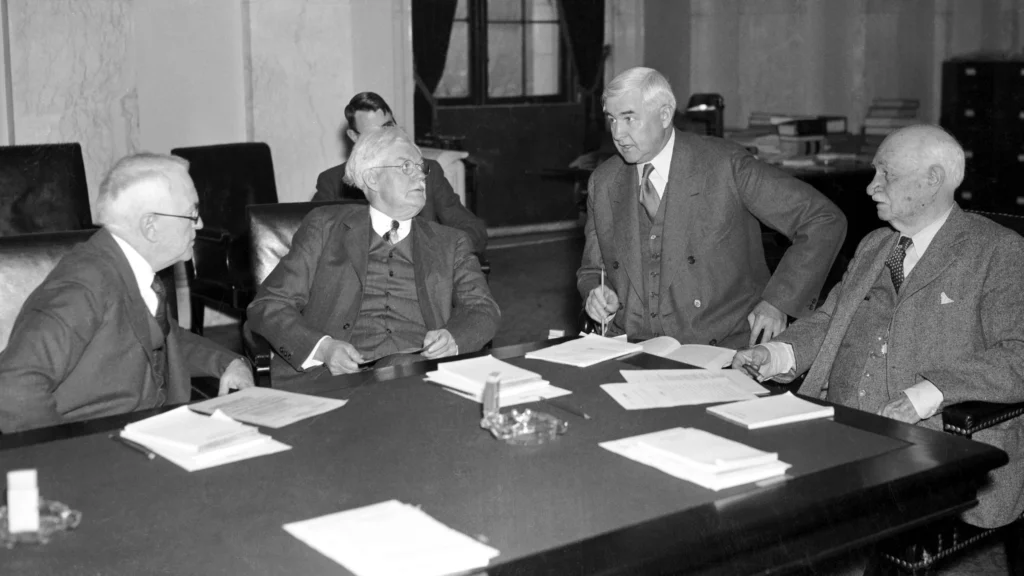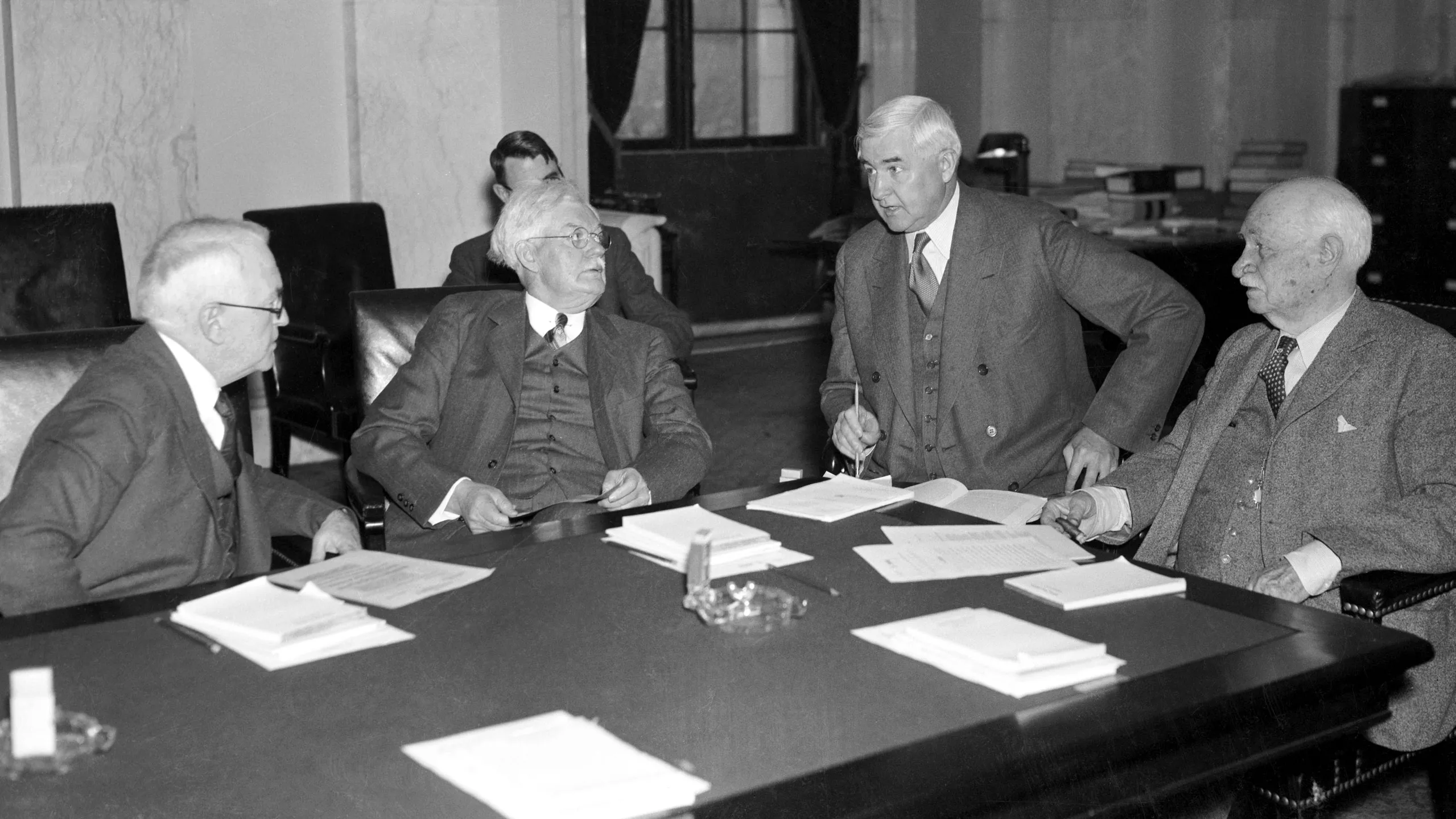In the annals of American economic history, the Reconstruction Finance Corporation (RFC) stands out as a pivotal institution. Established in 1932 during the Great Depression, its mission was to provide financial support to struggling industries, banks, and railroads. Let’s delve deeper into the purpose, leadership, and significance of the RFC.
Purpose of the Reconstruction Finance Corporation:
The RFC was born out of necessity. With the economy in shambles and unemployment soaring, President Herbert Hoover sought a solution to stabilize the financial system and jumpstart economic recovery. The RFC was his answer. Its primary purpose was to inject liquidity into the economy by extending loans to banks, businesses, and other entities facing financial distress. By providing this financial lifeline, the RFC aimed to prevent further economic collapse and facilitate the revival of key industries.

Leadership of the Reconstruction Finance Corporation:
At its helm was Jesse H. Jones, a prominent businessman and trusted advisor to President Franklin D. Roosevelt. Appointed by Roosevelt in 1933, Jones served as the RFC’s chairman and played a crucial role in shaping its policies and initiatives. Under his leadership, the RFC expanded its reach and influence, becoming a central player in the nation’s economic recovery efforts. Jones’s pragmatic approach and business acumen helped steer the RFC through turbulent times, earning him widespread recognition for his contributions to the New Deal era.
Significance of the Reconstruction Finance Corporation:
The RFC’s impact on the American economy cannot be overstated. Through its various lending programs and initiatives, it provided vital support to industries ranging from agriculture to manufacturing, enabling them to weather the storm of the Great Depression. The RFC’s intervention also stabilized the banking sector, preventing widespread bank failures and restoring public confidence in the financial system. Additionally, the RFC played a crucial role in funding public works projects, infrastructure development, and wartime production during World War II, further cementing its legacy as a key player in shaping the nation’s economic trajectory.
Conclusion:
In conclusion, the Reconstruction Finance Corporation was a linchpin of economic recovery during one of the darkest chapters in American history. Through its innovative policies and steadfast leadership, it helped steer the nation away from the brink of collapse and laid the foundation for future prosperity. While the RFC may have faded into obscurity over time, its legacy remains indelible, serving as a testament to the power of decisive action in times of crisis.
As we reflect on the challenges facing our economy today, the lessons of the RFC’s past provide valuable insights into the role that proactive government intervention can play in fostering economic resilience and ensuring a brighter future for all.
This article is aimed to educate and inform readers about the Reconstruction Finance Corporation, its purpose, leadership, and significance in American history. Through careful optimization for relevant keywords and informative content, we aim to enhance its visibility and reach to those seeking insights into this crucial aspect of economic history.
